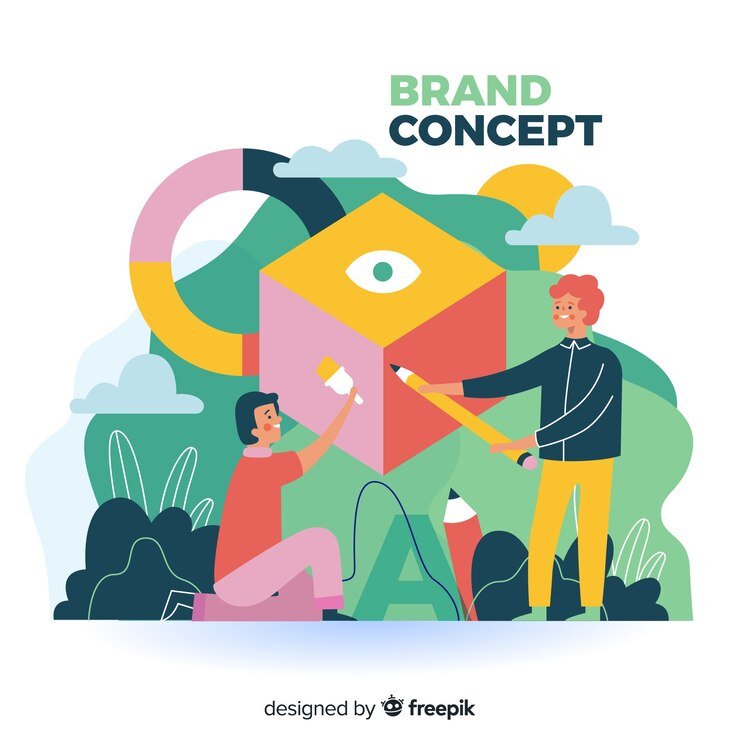The Role of Logo Design in Consumer Perception

A logo is a brand’s first impression, significantly influencing how consumers perceive the brand’s quality, values, and personality. This guide explores the essential role of logo design in shaping consumer perception and trust. Topics include color psychology, font and shape choices, the importance of simplicity, and how these design elements communicate credibility, relatability, and innovation. By examining successful logos across industries, you’ll understand how visual components can create a sense of familiarity, evoke emotions, and foster brand loyalty. This article is ideal for business owners, marketers, and designers aiming to craft logos that resonate deeply with their target audience and drive positive brand perception.
The Psychological Impact of Logo Design
- First Impressions Matter: How a logo influences a consumer’s initial perception of brand quality.
- Trust and Familiarity: Building consumer trust with recognizable and reliable design elements.
- Emotional Connection: How logos can evoke specific emotions and set brand tone.
Color Psychology in Logos
- Color as a Communicator: Colors as tools for conveying brand characteristics (e.g., green for eco-friendly, blue for reliability).
- Influencing Mood and Behavior: Using colors that create desired consumer responses.
- Color Harmony and Brand Consistency: Ensuring that color schemes remain consistent and represent the brand well across all platforms.
Typography and Brand Voice
- Font Selection and Personality: Serif for tradition, sans-serif for modernity, script for luxury.
- Readable, Memorable Typography: How simplicity and clarity in typography aid memorability.
- Typography’s Impact on Perception: Fonts that convey a tone—whether playful, serious, or elegant.
Simplicity for Long-Lasting Recognition
- Why Simple Logos Are Powerful: Simple designs are easier to recognize and remember.
- Avoiding Complexity: How removing clutter enhances the logo’s effectiveness.
- Scalability Across Platforms: Ensuring the logo is versatile and impactful in any format.
Shapes and Symbolism in Logo Design
- Geometric Shapes and Consumer Associations: Circles for community, triangles for innovation, squares for stability.
- Subtle Symbolism for Enhanced Brand Messaging: Adding layers of meaning through thoughtfully selected shapes.
- Using Shapes for Distinction: Creating unique shapes that help logos stand out from competitors.
The Influence of Industry Trends
- Adapting Design Trends with Caution: Knowing when and how to incorporate trends to stay relevant.
- Timeless vs. Trendy: Balancing current trends with a design that endures over time.
- Evaluating Competitor Logos: Understanding industry standards to create a unique yet relatable logo.
Brand Consistency and Identity Reinforcement
- Consistency Across Brand Touchpoints: Maintaining uniformity in colors, fonts, and design across platforms.
- Visual Identity Strengthening: Building a strong visual identity that consumers easily recognize.
- Fostering Brand Loyalty: Consistent, high-quality design fosters consumer trust and loyalty.
Cultural Relevance and Inclusivity
- Cultural Sensitivity in Design: Creating logos that resonate across different demographics.
- Avoiding Misinterpretation: Ensuring symbols and colors are culturally appropriate and well-received.
- Broadening Appeal Through Inclusivity: Designing logos that reflect diverse perspectives and values.
Testing Logo Effectiveness with Consumers
- Gathering Consumer Feedback: Using focus groups to test initial perceptions.
- Refining Based on Audience Insights: Adjusting logo elements to better communicate brand identity.
- Measuring Logo Success in Market: Evaluating logo performance in real-world brand perception.














